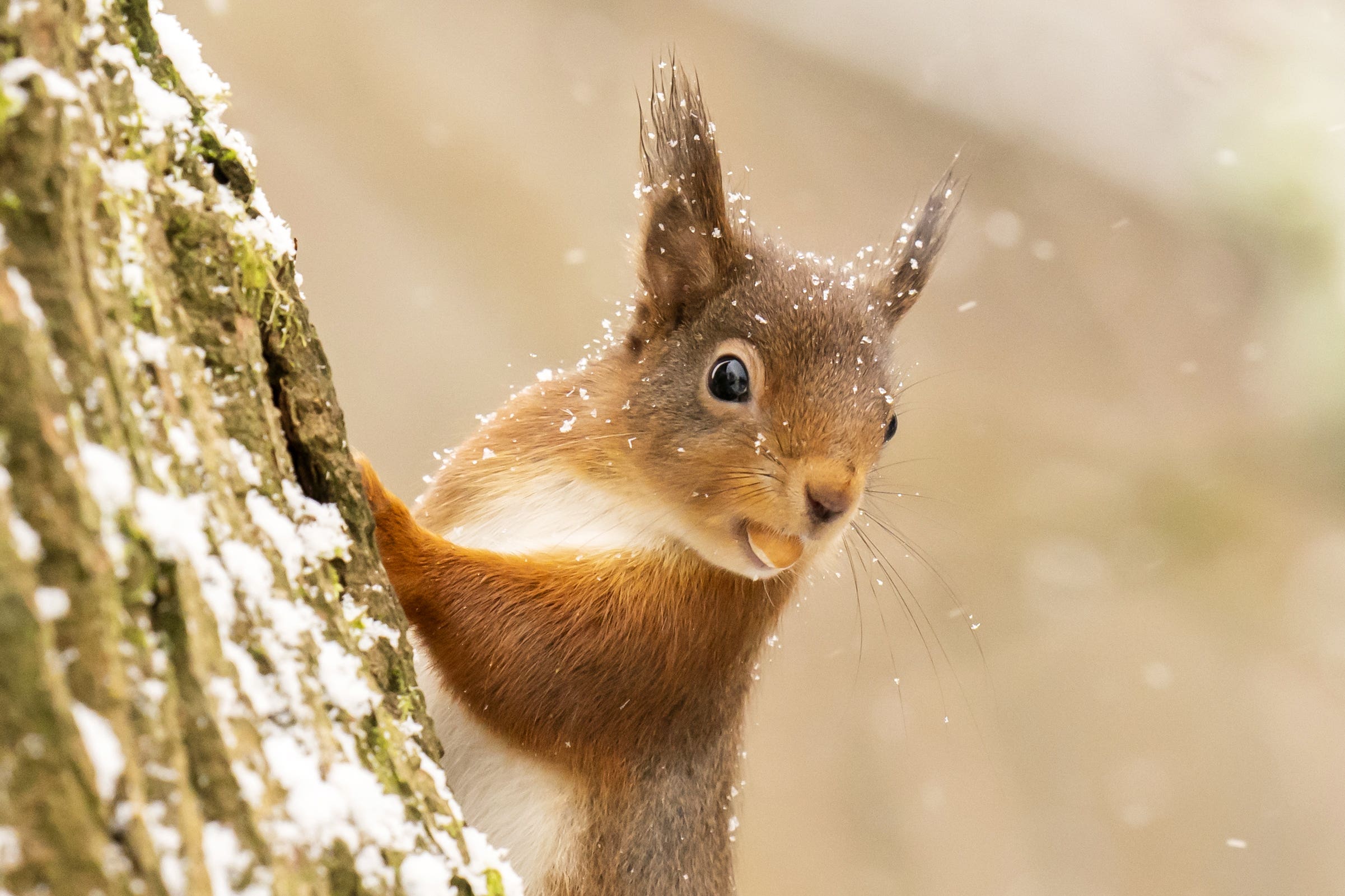Red squirrels living apart on Isle of Wight have different genes, research finds
Conservationists are attempting to build woodland corridors by planting trees and hedgerows to allow the two sets of the native squirrel to mix.

Your support helps us to tell the story
From reproductive rights to climate change to Big Tech, The Independent is on the ground when the story is developing. Whether it's investigating the financials of Elon Musk's pro-Trump PAC or producing our latest documentary, 'The A Word', which shines a light on the American women fighting for reproductive rights, we know how important it is to parse out the facts from the messaging.
At such a critical moment in US history, we need reporters on the ground. Your donation allows us to keep sending journalists to speak to both sides of the story.
The Independent is trusted by Americans across the entire political spectrum. And unlike many other quality news outlets, we choose not to lock Americans out of our reporting and analysis with paywalls. We believe quality journalism should be available to everyone, paid for by those who can afford it.
Your support makes all the difference.Red squirrels found living on different sides of the Isle of Wight have different genetic make-up, according to new research.
Scientists from Bournemouth University believe the urban landscapes of the island off Hampshire are preventing the native squirrels from intermingling as they prefer to live in the canopy of trees or hedges.
Now conservationists are attempting to build woodland corridors by planting trees and hedgerows to allow the two sets of the native squirrel to mix.
Britain’s populations of red squirrels rapidly declined following the introduction of the grey squirrel from North America in the 19th century and are now found in only a few areas of the country.
Giving all the populations on the island the opportunity to mix would allow them to bring all their gene pools together, creating better genetic health for future generations of squirrel
Dr Emilie Hardouin, who is co-lead of the study published in the journal Conservation Genetics, said a mixed gene pool would give the squirrels a better chance of survival.
She said: “Red squirrels are thriving on the Isle of Wight, but they need to be able to adapt to new environmental conditions.
“Giving all the populations on the island the opportunity to mix would allow them to bring all their gene pools together, creating better genetic health for future generations of squirrel and ensuring they can adapt as needed.”
Co-lead Dr Kathy Hodder said: “Unlike their grey counterparts, red squirrels are reluctant to travel across open ground and spend a lot of their time up in the trees.
“The areas that are suitable for squirrel habitat are quite limited, with only patches of woodlands.
“Hedgerow trees can act as stepping-stones between these patches which will help other woodland species as well as the squirrels.”
The scientists say that despite the split populations, they did not find worrying levels of inbreeding which can be a problem in island species.
They added that an earlier study found that the Isle of Wight squirrels are closely related to those living on Brownsea and Furzey Islands in Dorset.
Dr Hardouin said: “This could mean that the island populations are descended from the remnants of the original Dorset and Hampshire populations which have since disappeared.
“The fact that they are genetically distinct is another important reason why we need to conserve them.”